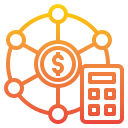Start Strong: Essential Tools for Beginner Financial Planning
Chosen theme: Essential Tools for Beginner Financial Planning. Welcome to your first, friendly toolkit for building confidence with money—clear steps, practical apps, and habits that help you save, plan, and grow without overwhelm. Subscribe for checklists, templates, and weekly, beginner-friendly prompts.
Build a Budget You Can Actually Keep
Zero‑based budgeting assigns every dollar a job, from rent to treats. Apps make categories visible and flexible, so overspending becomes a signal, not a failure. One reader, Maya, finally spotted subscription creep and redirected that money into an emergency fund within a month.
Build a Budget You Can Actually Keep
A simple spreadsheet creates instant clarity without a learning curve. Start with income, essentials, goals, and fun. Color code, add notes, and track trends monthly. When you see patterns, you can tweak quickly and celebrate small wins. Ask for our free starter template if you want help.


Keep your emergency cash in a high‑yield savings account, separate from daily spending. A dedicated account creates a psychological barrier to dipping in, while interest quietly boosts your balance. It’s simple, safe, and purpose‑built for the sudden expenses life loves to throw at us.
Emergency Fund Essentials

Snowball vs. Avalanche Calculators
Snowball focuses on the smallest balances first to create quick wins. Avalanche attacks the highest interest to minimize total cost. Use a calculator to compare timelines and interest saved. Picking the approach you’ll actually follow matters more than the one that looks perfect on paper.

Clear, Centralized Debt Inventory
Create one sheet or dashboard listing balances, minimums, due dates, and interest rates. Update it monthly to see real progress. That visible downward trend is motivational fuel. If you’ve ever avoided opening statements, this simple habit transforms dread into data you can act on confidently.

Due Date Alerts and Payment Flow
Set calendar reminders and autopay at least for minimums to prevent fees and credit score dings. Then add an extra payment to your target debt right after payday. Structuring the flow in advance removes friction and keeps momentum steady even during busy, stressful weeks.
Beginner Investing Toolkit
Use a beginner‑friendly quiz to gauge risk tolerance and match it to your time horizon. Short‑term goals need safety; long‑term goals can weather swings. Knowing yourself frames every decision, prevents panic selling, and helps you choose balanced, diversified options you can stick with.


Beginner Investing Toolkit
Robo‑advisors automate diversification and rebalancing for beginners. Low‑cost index funds offer broad market exposure with minimal effort. Read the fees, confirm risk levels, and start small. The real tool is consistency—steady contributions over time often matter more than perfect timing or complex strategies.
Organize, Protect, and Simplify
Store financial logins in a password manager and enable two‑factor authentication for every money app. Strong, unique passwords protect the foundation you’re building. This one habit closes so many avoidable risks and takes only minutes to set up across your essential accounts.
Write one page each month on what worked, what surprised you, and what you’ll tweak. Noting feelings alongside numbers shows triggers and victories. Over time, entries reveal progress that spreadsheets alone can’t capture, especially when motivation dips and you need a reminder of growth.

